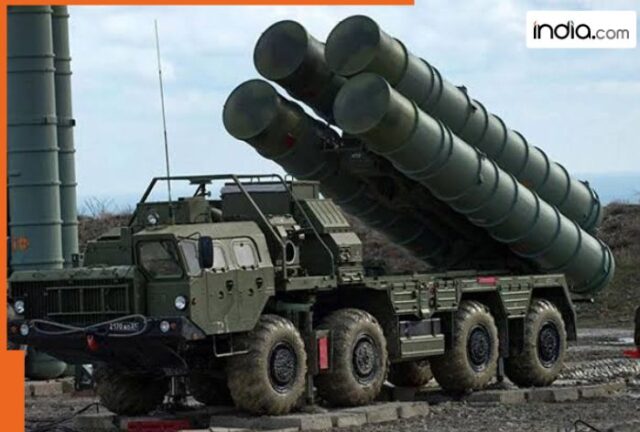India signed a USD 5.43 billion deal with Russia in 2018 to acquire five S-400 units. The first unit was deployed in 2021 in the Punjab sector, specifically to counter threats from both Pakistan and China.
During Operation Sindoor, the Indian Army carried out precision airstrikes on nine terrorist camps located across Pakistan and Pakistan-occupied Kashmir (PoK). In retaliation, Pakistan attempted to launch drone and missile attacks targeting several Indian cities near the borders of Jammu & Kashmir, Rajasthan, and Punjab. However, India’s advanced air defense system, the S-400, played a game-changing role in neutralizing these threats.
Often referred to in India as the ‘Sudharshan Chakra’, S-400 system is a long-range surface-to-air missile defense platform capable of detecting and destroying aerial targets with remarkable precision. It can track over 100 targets simultaneously and engage threats at a distance of up to 400 kilometers. This includes aircraft, drones, cruise missiles, and even ballistic missiles. It has a tracking range of 600 kilometers.
India’s S-400 deal with Russia
India signed a USD 5.43 billion deal with Russia in 2018 to acquire five S-400 units. The first unit was deployed in 2021 in the Punjab sector, specifically to counter threats from both Pakistan and China. During Operation Sindoor, the S-400’s quick response and interception capabilities proved crucial in protecting Indian airspace from Pakistani missile and drone attacks.
Now, a more advanced version the S-500 is being talked about. As tensions continue to simmer in the region, the introduction of this next-generation air defense system could further boost India’s strategic edge.
About S-500 Prometheus
The S-500, also known by its codename Prometheus is designed to address the rapidly evolving threats of modern warfare, it goes far beyond its predecessor the S-400 in scope, capability, and technological advancement.
Whereas the S-400 is capable of tracking over 100 targets and neutralizing threats like aircraft, drones, and ballistic missiles up to 400 kilometers away, the S-500 is built for the future battlefield. It is specifically designed to intercept hypersonic glide vehicles, high-speed drones, and even low Earth orbit (LEO) satellites threats that are fast becoming a central challenge in global defense strategy.
Key capabilities of the S-500 Prometheus:
Target Range (Detection):
- Ballistic Missiles: Up to 2,000 km
- Aerial Targets (jets, UAVs, etc.): Up to 800 km
Target Range (Interception):
- Ballistic Missiles: Up to 600 km
- Aerial Threats: Up to 400 km
Advanced Radar Systems:
- Equipped with jam-proof, multi-frequency radars capable of detecting stealth aircraft, space-based threats, and hypersonic projectiles.
Anti-Satellite Capability:
- Can engage and destroy LEO satellites, providing space denial and an edge in space warfare scenarios.
Enhanced Altitude and Reaction Time:
- Can engage targets at altitudes of up to 200 km (vs. 30 km for the S-400)
- Has a reaction time of just 3–4 seconds, compared to 9–10 seconds for the S-400.
S-400 vs S-500
| Feature | S-400 | S-500 Prometheus |
|---|---|---|
| Detection Range (Air) | 600 km | 800 km |
| Interception Range (Air) | 400 km | 400 km |
| Interception Range (Ballistic) | 60 km – 250 km | Up to 600 km |
| Hypersonic Missile Intercept | Not effective | Yes |
| Anti-Satellite Capability | No | Yes |
| Reaction Time | 9–10 seconds | 3–4 seconds |
| Altitude Engagement | Up to 30 km | Up to 200 km |
| Stealth Tracking | Moderate | Advanced Multi-frequency Radar |
| Simultaneous Target Tracking | Very High (100+) | High, but slightly less than S-400 |
While the S-400 remains one of the most powerful multi-role air defense systems especially suited for layered defense against aircraft, cruise missiles, and drones the S-500 is designed to set a new global standard.
















































